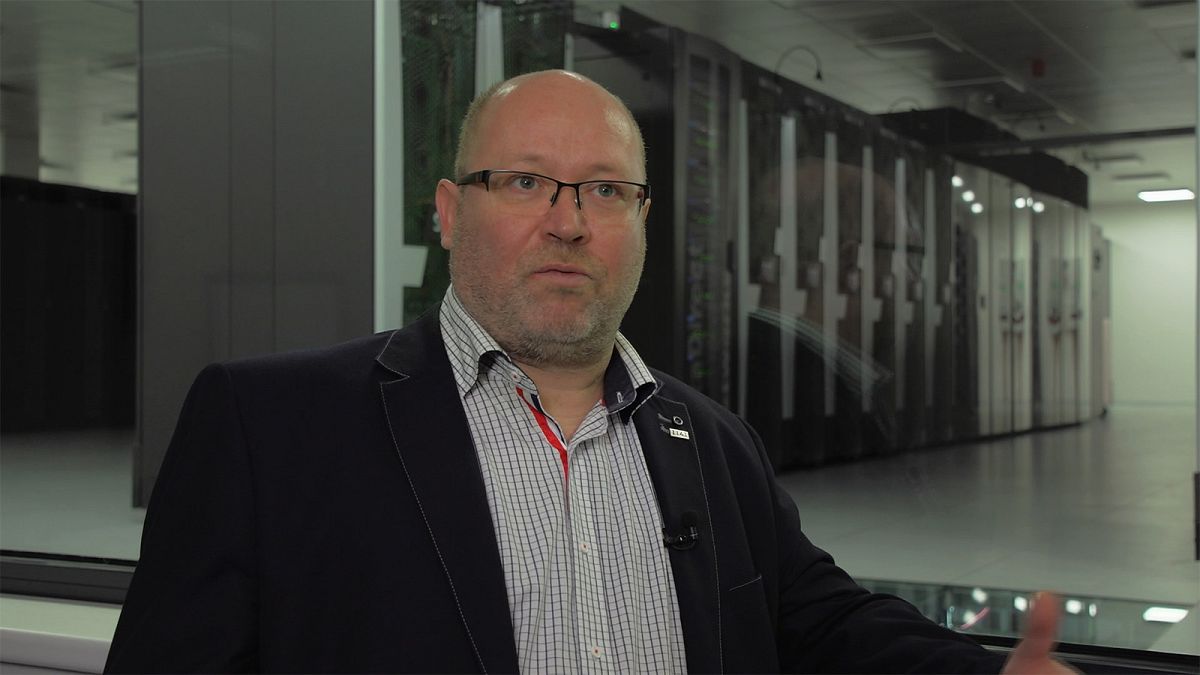Supercomputers operate in a controlled environment, with low oxygen levels and unique power supply systems to keep them running perfectly. We visited the IT4Innovations supercomputing centre in Ostrava in the Czech Republic to find out more for our Smart Regions series on Euronews.
Supercomputers operate in a controlled environment, with low oxygen levels and unique power supply systems to keep them running perfectly. We visited the IT4Innovations supercomputing centre in Ostrava in the Czech Republic to find out more for our Smart Regions series on Euronews.
The centre's main supercomputer is called Salomon, with a computational power of 2 Petaflops - which means it can carry out 2,0011,000,000,000,000 operations per second. It comprises 1008 compute nodes with an Infiniband FD 56GB/s connection, offering exrtaordinary computing power.
To keep the system working safely, it operates in an oxygen-reduced environment, with only 15% oxygen in the air, instead of the usual 21%. This is similar to the oxygen levels at Alpine altitudes, and makes it impossible for a fire to start inside the data hall.
Computers generate a lot of heat, and it is put to good use in this Czech building. The liquid cooling system uses heat exchangers to heat the building and create hot water for the staff and visitors.
The supercomputer operates with an input of 2.5 megawatts of power, and in case of an outtage threatening electricity supply the entire supercomputing centre is powered by a diesel generator for up to 3 days, with a massive flywheel system providing the continuity of power for a fraction of a second as the system switches from one to another.
